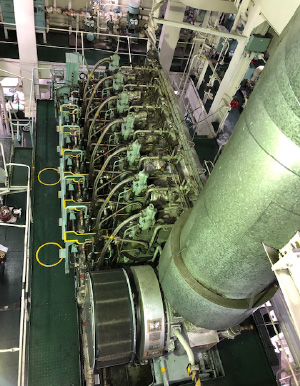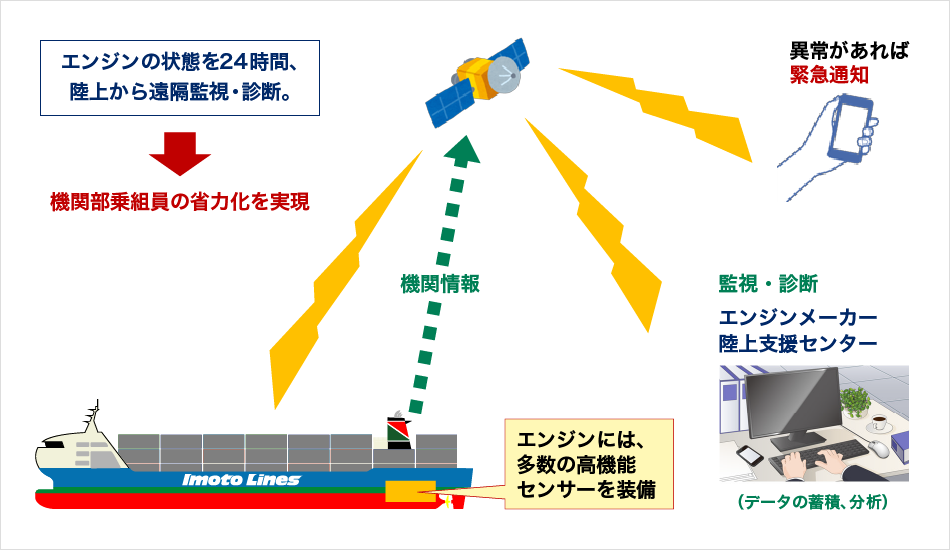Safety Initiatives
Investment, management and plan for continuous safety
Advance information on port and navigation areas
We have around 60 ports of call in our service network and some vessels may call more than one or two ports in a day. So advance information must be provided to all vessels in operation to notify on construction sites and fishery activities in and around the ports and the surrounding waters to ensure that they can safely enter and leave the ports.
We also frequently check weather information from multiple sources to keep all the crews updated because especially in recent years, there have been climate changes on a global scale, such as rising sea temperatures, uneven meandering ocean currents and changes in westerly winds that lead to more chance of severe weather and make sea conditions harder to predict.
In order to avoid dangerous anchor dragging in harsh sea conditions caused by typhoon and extreme low pressure, we utilize AIS to visually check the anchorage position of each ship in the estimated affected area to confirm that it is in safe distance from other objects such as submarine cables and facilities like airports.
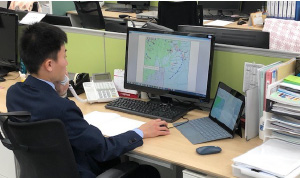
*Monitoring weather and sea conditions
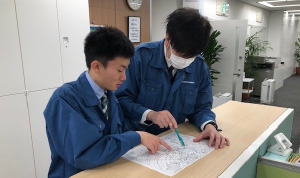
*Analyzing weather information.
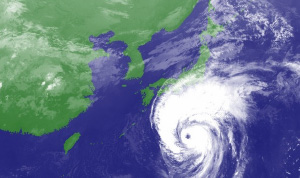
*Typhoon no. 18 in 2018 that caused major damage in and around the port area of Osaka and Kobe.
Observing the situation around the vessels from shore
(1) Introduction of live cameras (AIS LIVE JAPAN)
A live camera installed in the wheelhouse acquires real-time visual information, making it possible to observe vessel operations from shore, including navigation and cargo handling. It also enables us to grasp irregular situations, for example, where containers are at the risk of falling in rough weather, sea conditions, visibility, etc., in the same way as on-board operators do.
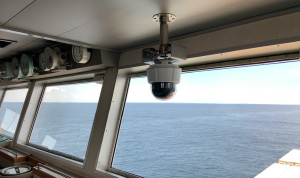
*Live camera on the ship's bridge

*Anti-shock device delivers crisp images even in rough weather
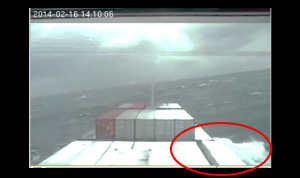
*Video shows a container in danger of falling due to stormy weather
(2) Vessel Tracking System (contracted by AIS LIVE JAPAN, Inc. for "Alphamap")
AIS (Automatic Identification System) information from our fleet gives us real-time information on their position, course, speed and other navigation information as well as its departure/destination port and estimated arrival time.
Information on the vessel's trajectory (time, position, course, speed) in the event of an accident is used to identify the cause of the accident and to verify measures to prevent recurrence.
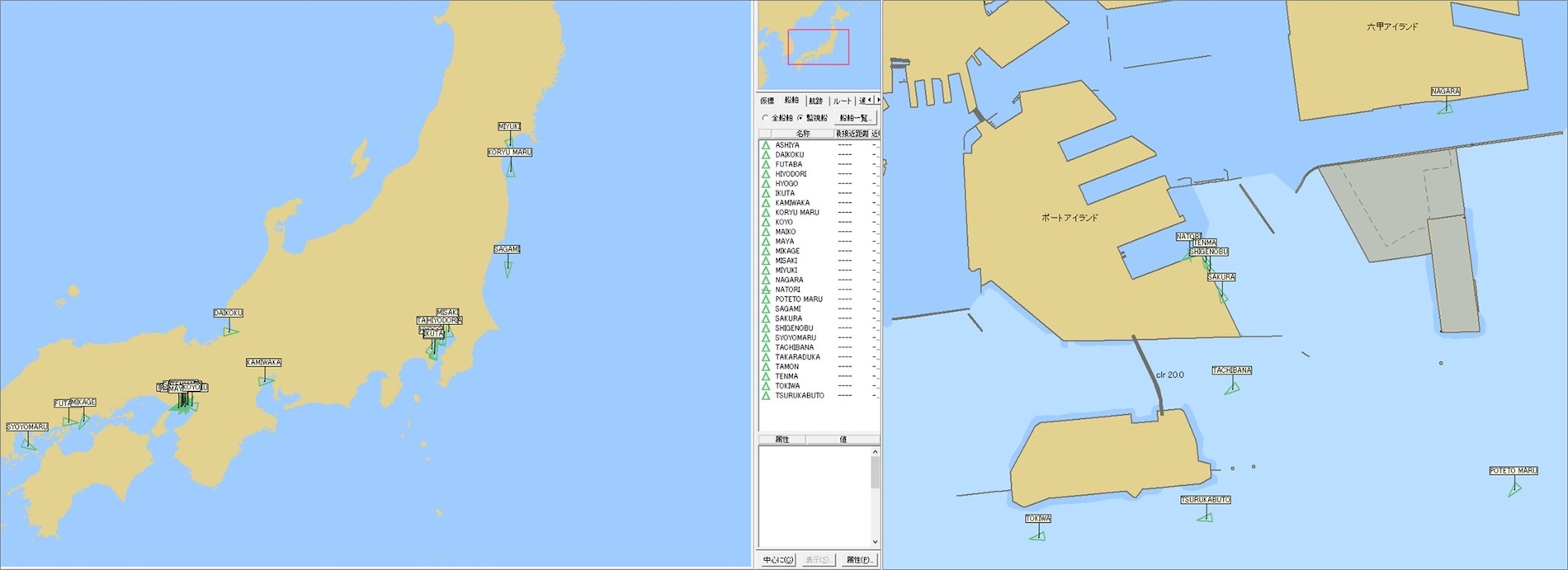
Improving Ship Operation Performance
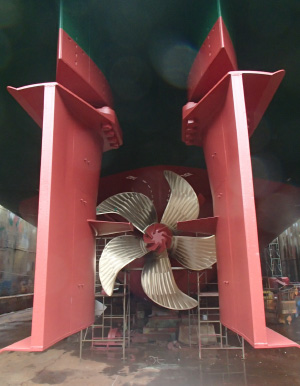
*Nagara’s stern

*Joystick installed on Nagara's control panel
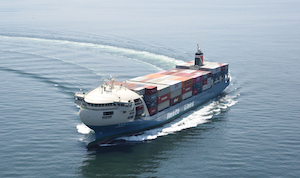
High maneuverability with “Super Vec-Twin rudder”
In order to improve the maneuverability, “Nagara” (the second 600TEU vessel) was equipped with a Super Vec-Twin rudder.
The combination of two pairs of symmetrical shilling rudders enables the vessel to turn left and right as well as go backwards by closing both rudders while keeping forward thrust.
When leaving the shore, the joystick on the control panel is used in combination with the bow thruster, allowing the vessel to move in parallel and turn in place, dramatically improving maneuverability in comparison with a single rudder.
In addition to the introduction of these technologies, we will continue the effort to adopt the latest technologies for safety and energy conservation, in order to support safe ship operation from a technical standpoint.
Ship Maintenance
In February 2020, Engineering Department was established which was previously a part of Shipbuilding Department. The new department is mainly responsible for the maintenance and management of ships.
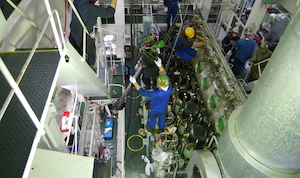
*Maintenance of main engines
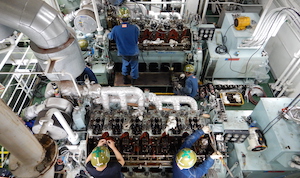
*Maintenance of auxiliary equipment
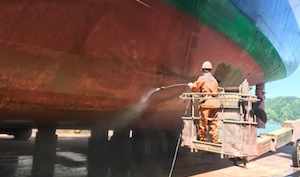
*High-pressure cleaning of the exterior panels
Maintenance Operation Procedure

What is "preventive maintenance"?
It is the practice of setting an estimated durable period of a ship's equipment and parts and then repairing, replacing parts, and maintaining them after the period, even if they have not broken down or show no sign of anomaly.
By the preventive maintenance, sudden breakdown can be avoided and work can be well planned, limiting ship stoppages to only periodic maintenance.
Clearly, preventive maintenance is superior to “post-maintenance” in which repairs are carried out after breakdown, in terms of avoiding unexpected problems that affect our operation.
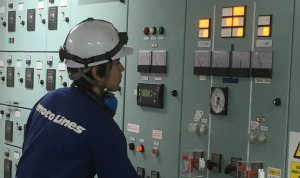
Equipment Maintenance Plan (using IoT technology)
Adoption of the Advanced Ship Safety Management System
The Advanced Ship Safety Management System (ASMS) remotely diagnoses from shore the condition of the main engine based on information obtained from sensors that monitor the engine and its components. Based on the diagnosis, appropriate maintenance of the main engine is carried out in accordance with instructions from shore to detect early signs of serious abnormality and prevent breakdown.
By adopting this next-generation safety management system, the diagnosis of the main engine's condition can be done by the useful accumulated data and analysis. This management system has been approved by the Ministry of Land, Infrastructure, Transport and Tourism (MLIT).
